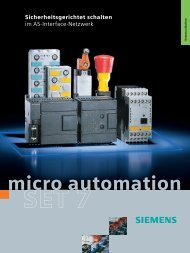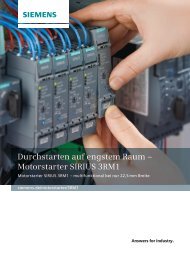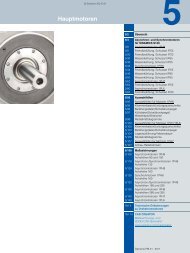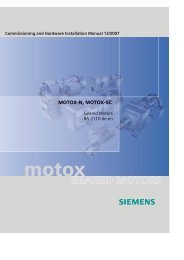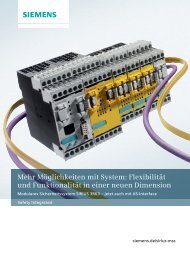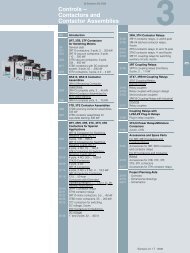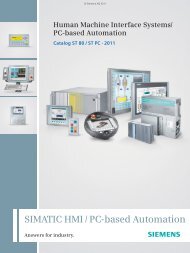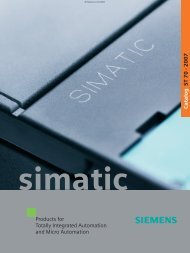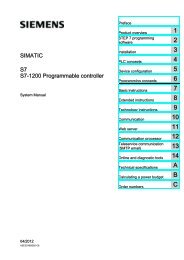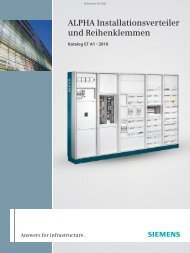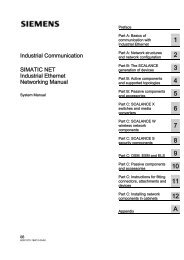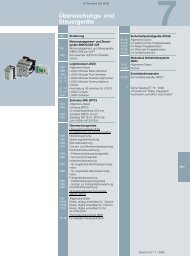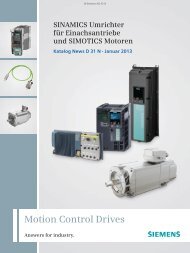DC motor - Siemens, s.r.o.
DC motor - Siemens, s.r.o.
DC motor - Siemens, s.r.o.
Create successful ePaper yourself
Turn your PDF publications into a flip-book with our unique Google optimized e-Paper software.
Operation<br />
5.2 Energizing<br />
Overview<br />
Vibration values<br />
Start the <strong>motor</strong>, if possible, without any load coupled, and check that it runs<br />
smoothly (balance quality). If the <strong>motor</strong> runs perfectly under no-load conditions,<br />
connect to the load, and check the temperatures of the bearings and windings -<br />
insofar as this is possible with the available measuring equipment.<br />
In order to ensure proper commutation, lower brush wear and a long service life<br />
when the <strong>motor</strong> is in operation, the following <strong>motor</strong> vibration values should not be<br />
exceeded:<br />
Table 5-1 Vibration values as a function of vibration frequency<br />
Vibration frequency Vibration values<br />
< 6.3 Hz Vibration displacement S<br />
(mm)<br />
≤ 0.25<br />
6.3 to 63 Hz Vibration velocity vrms (mm/s) ≤ 7.1<br />
> 63 Hz Vibration acceleration a<br />
(m/s 2 )<br />
[ID 559]<br />
5.3 De-energizing<br />
Overview<br />
SIEMENS AG T61160347010001 (DMHO V9)<br />
5-2 Operating instructions 1GG6286-0NA4.-1VV1-Z<br />
≤ 4.0<br />
It is assumed that the deenergizing procedures are performed by an automatic<br />
control function.<br />
Danger<br />
If the corresponding control function is not performed automatically, the available<br />
fan unit and coolers must be switched off and the standstill heating switched on.<br />
If water cooling is used, note that damage may be caused in the event of frost.<br />
[ID 560]




